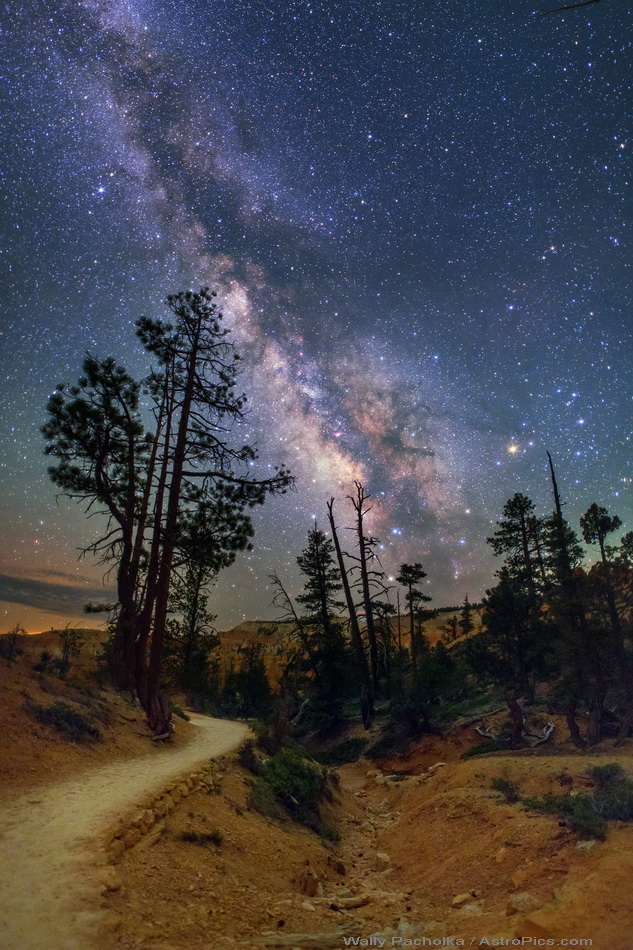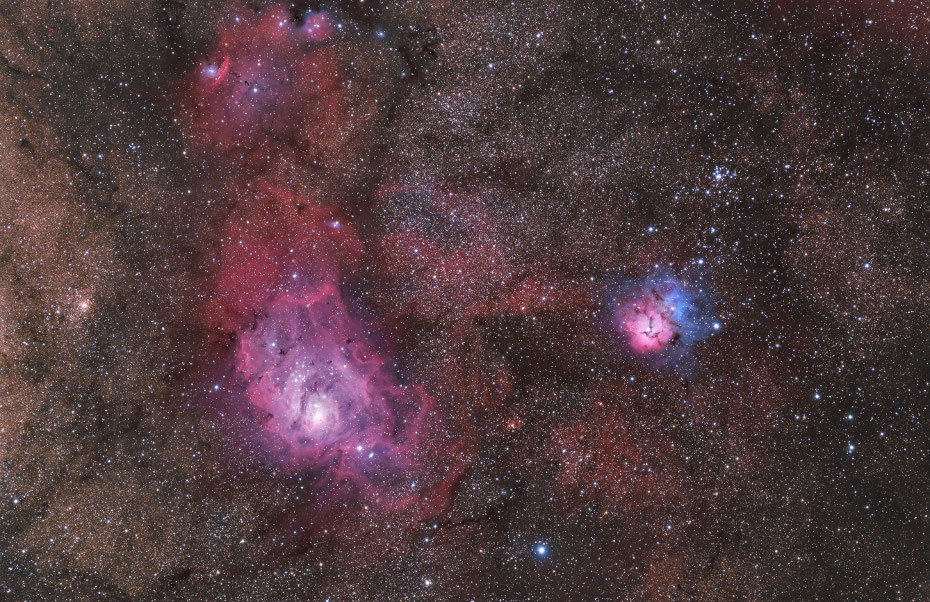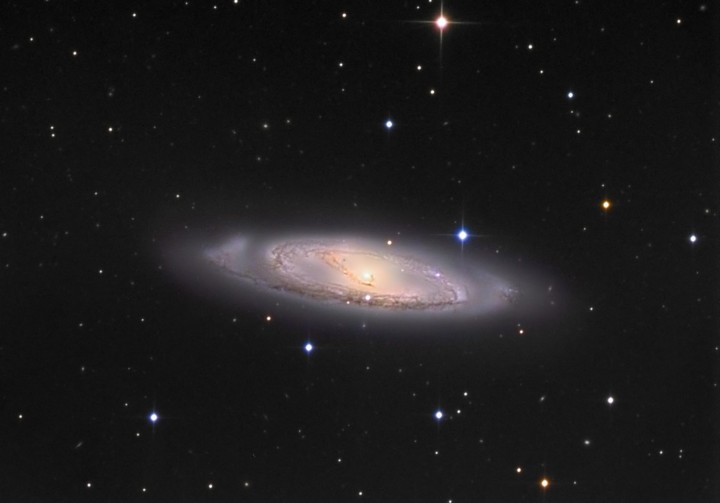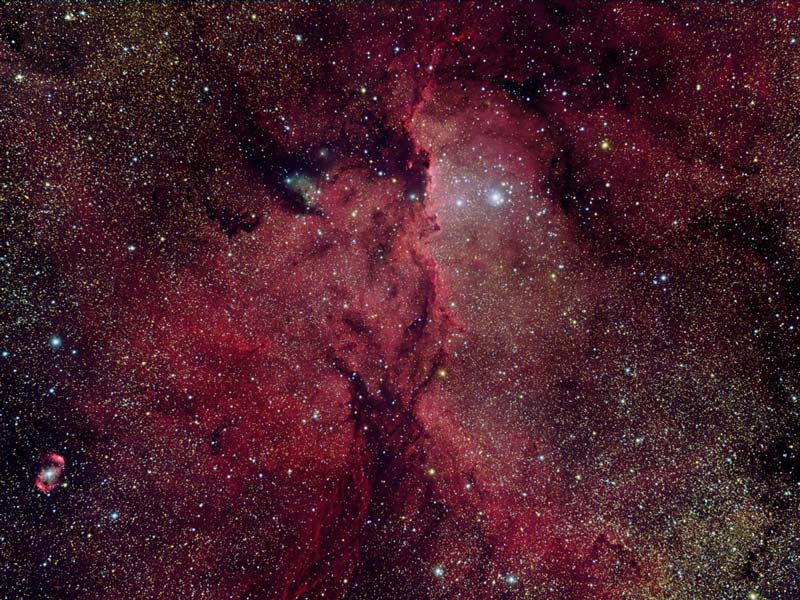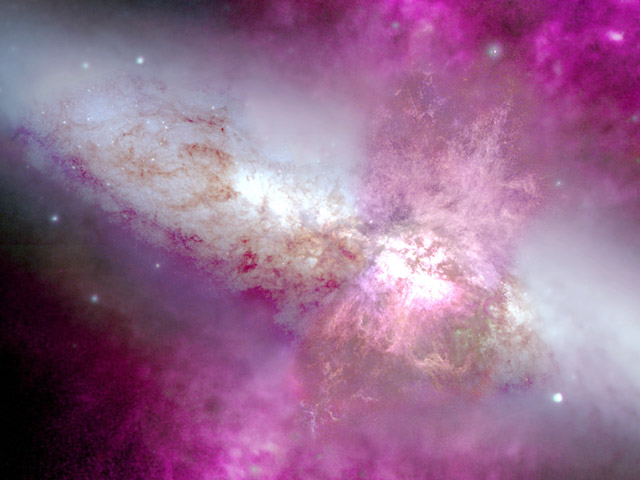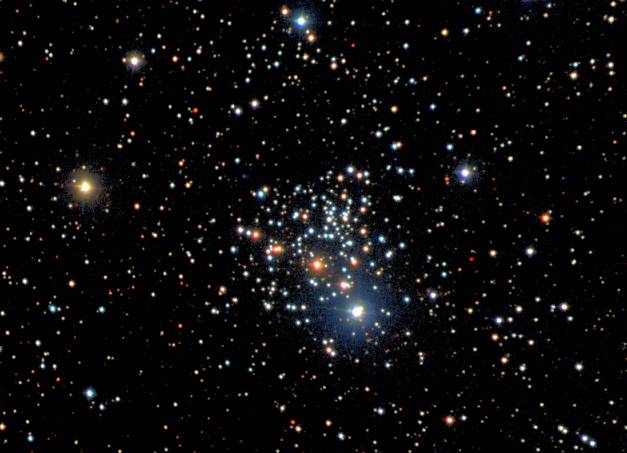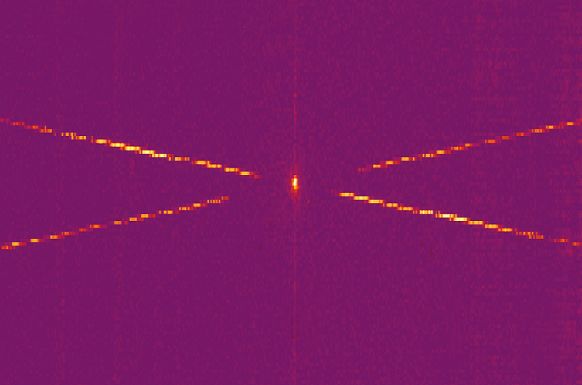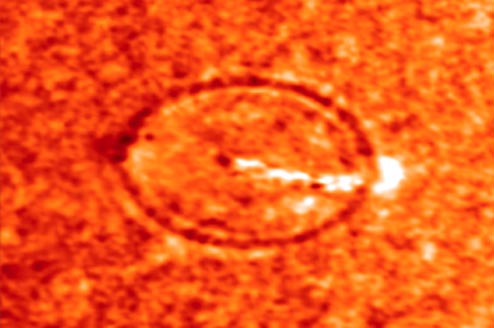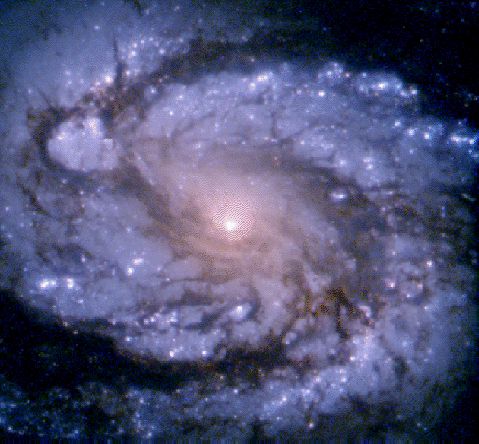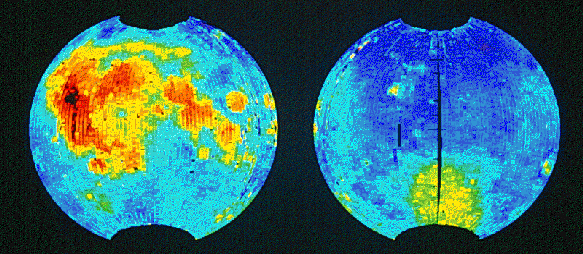| << Previous | Index | Next >> |
2015
Video Credit & Copyright: Stéphane Vetter (Nuits sacrées); Music: Eric Aron
2014 The Cat's Eye Nebula (NGC 6543) is one of the best known planetary nebulae in the sky. Its haunting symmetries are seen in the very central region of this stunning false-color picture, processed to reveal the enormous but extremely faint halo of gaseous material, over three light-years across, which surrounds the brighter, familiar planetary nebula. Made with data from the Nordic Optical Telescope in the Canary Islands, the composite picture shows extended emission from the nebula. Planetary nebulae have long been appreciated as a final phase in the life of a sun-like star. Only much more recently however, have some planetaries been found to have halos like this one, likely formed of material shrugged off during earlier active episodes in the star's evolution. While the planetary nebula phase is thought to last for around 10,000 years, astronomers estimate the age of the outer filamentary portions of this halo to be 50,000 to 90,000 years.
2013 Have you ever hiked the Queen's Garden trail in Bryce Canyon, Utah, USA, planet Earth? Walking along that path in this dark night skyscape, you can almost imagine your journey continues along the pale, luminous Milky Way. Of course, the name for our galaxy, the Milky Way (in Latin, Via Lactea), does refer to its appearance as a milky band or path in the sky. In fact, the word galaxy itself derives from the Greek for milk. Visible on moonless nights from dark sky areas, though not so bright or quite so colorful as in this image, the glowing celestial band is due to the collective light of myriad stars along the plane of our galaxy, too faint to be distinguished individually. The diffuse starlight is cut by dark swaths of obscuring galactic dust clouds. Four hundred years ago, Galileo turned his telescope on the Milky Way and announced it to be "... a congeries of innumerable stars ..."
2012 These three bright nebulae are often featured in telescopic tours of the constellation Sagittarius and the crowded starfields of the central Milky Way. In fact, 18th century cosmic tourist Charles Messier cataloged two of them; M8, the large nebula left of center, and colorful M20 on the right. The third, NGC 6559, is above M8, separated from the larger nebula by a dark dust lane. All three are stellar nurseries about five thousand light-years or so distant. The expansive M8, over a hundred light-years across, is also known as the Lagoon Nebula. M20's popular moniker is the Trifid. Glowing hydrogen gas creates the dominant red color of the emission nebulae, with contrasting blue hues, most striking in the Trifid, due to dust reflected starlight. This broad skyscape also includes one of Messier's open star clusters, M21, just above and right of the Trifid.
2011
Click to play embedded YouTube video.
Credit: S. Guisard & Jose Francisco Salgado, ESO, Bulletpeople.com; Music: Arcadia (License: Kevin Macleod)
2010 Is the heart and soul of our Galaxy located in Cassiopeia? Possibly not, but that is where two bright emission nebulas nicknamed Heart and Soul can be found. The Heart Nebula, officially dubbed IC 1805 and visible in the above right, has a shape in optical light reminiscent of a classical heart symbol. The above image, however, was taken in infrared light by the recently launched WISE telescope. Infrared light penetrates well inside the vast and complex bubbles created by newly formed stars in the interior of these two massive star forming regions. Studies of stars and dust like those found in the Heart and Soul Nebulas have focussed on how massive stars form and how they affect their environment. Light takes about 6,000 years to reach us from these nebulas, which together span roughly 300 light years.
2009 Will Spirit be able to free itself from soft ground on Mars? The robotic Spirit rover currently rolling across Mars ran into unexpectedly soft ground last month while exploring the red planet. A worry is that the ground is so soft that Spirit won't be able to free itself, will have to stay put and thereafter study what it can from its current position near an unusual martian land feature named Home Plate. Pictured above, the front left wheel appears to be primarily digging itself in when spun, while on the other side, the front right wheel no longer spins and is dragged by the five year old mechanical explorer. In the distance, rocks and rusty dirt fill the alien landscape in front of the distant Husband Hill. NASA continues to study the situation, and engineers and scientists have not yet run out of ideas of how to use Spirit's six wheels. Far across Mars, Spirit's twin Opportunity continues on its two year trek toward Endeavour crater.
2008 Ten Earths could easily fit in the "claw" of this seemingly solar monster. The monster, though, visible on the lower left, is a huge eruptive prominence seen moving out from our Sun. The above dramatic image taken early in the year 2000 by the Sun-orbiting SOHO satellite. This large prominence, though, is significant not only for its size, but its shape. The twisted figure eight shape indicates that a complex magnetic field threads through the emerging solar particles. Differential rotation inside the Sun might help account for the surface explosion. Although large prominences and energetic Coronal Mass Ejections (CMEs) are relatively rare, they are occurred more frequently near Solar Maximum, the time of peak sunspot and solar activity in the eleven-year solar cycle.
2007 M65 is a big, beautiful spiral galaxy, the sixty-fifth object in the famous astronomical catalog compiled by 18th century cosmic tourist Charles Messier. It's also a member of a picturesque trio of large spiral galaxies known as the Leo Triplet, about 35 million light-years away. This sharp view of M65 shows off the galaxy in remarkable detail, with tightly wound spiral arms and dust lanes stretching into a core dominated by the yellowish light from an older population of stars. In fact, M65 seems to be the least disturbed of the Leo Trio, though it is close enough to be interacting gravitationally with the other two galaxies (not seen here). Very nearly edge-on to our line-of-sight, M65 is about 100,000 light-years across, similar in size to our Milky Way Galaxy.
2006 NGC 6188 is an interstellar carnival of young blue stars, hot red gas, and cool dark dust. Located 4,000 light years away in the disk of our Galaxy, NGC 6188 is home to the Ara OB1 association, a group of bright young stars whose nucleus forms the open cluster NGC 6193. These stars are so bright that some of their blue light reflects off of interstellar dust forming the diffuse blue glow surrounding the stars in the above photograph. Open cluster NGC 6193 formed about three million years ago from the surrounding gas, and appears unusually rich in close binary stars. The red glow visible throughout the photograph arises from hydrogen gas heated by the bright stars in Ara OB1. The dark dust that blocks much of NGC 6188's light was likely formed in the outer atmospheres of cooler stars and in supernovae ejecta.
2005 About 1,600 light-years away, in a binary star system fondly known as J0806, two dense white dwarf stars orbit each other once every 321 seconds. Interpreting x-ray data from the Chandra Observatory astronomers argue that the stars' already impressively short orbital period is steadily getting shorter as the stars spiral closer together. Even though they are separated by about 80,000 kilometers (the Earth-Moon distance is 400,000 kilometers) the two stars are therefore destined to merge. Depicted in this artist's vision, the death spiral of the remarkable J0806 system is a consequence of Einstein's theory of General Relativity that predicts the white dwarf stars will lose their orbital energy by generating gravity waves. In fact, J0806 could be one of the brightest sources of gravitational waves in our galaxy, directly detectable by future space-based gravity wave instruments.
2004
2003 In the center of a swirling whirlpool of hot gas is likely a beast that has never been seen directly: a black hole. Studies of the bright light emitted by the swirling gas frequently indicate not only that a black hole is present, but also likely attributes. The gas surrounding GRO J1655-40, for example, has been found to display an unusual flickering at a rate of 450 times a second. Given a previous mass estimate for the central object of seven times the mass of our Sun, the rate of the fast flickering can be explained by a black hole that is rotating very rapidly. What physical mechanisms actually cause the flickering -- and a slower quasi-periodic oscillation (QPO) -- in accretion disks surrounding black holes and neutron stars remains a topic of much research.
2002 The New General Catalog of star clusters and nebulae really isn't so new. In fact, it was published in 1888 - an attempt by J. L. E. Dreyer to consolidate the work of astronomers William, Caroline, and John Herschel along with others into a useful single, complete catalog of astronomical discoveries and measurements. Dreyer's work was successful and is still important today as this famous catalog continues to lend its "NGC" to bright clusters, galaxies, and nebulae. Take for example this star cluster known as NGC 2266 (item number 2,266 in the NGC compilation). It lies about 10,000 light-years distant in the constellation Gemini and represents an open or galactic cluster. With an age of about 1 billion years, NGC 2266 is old for a galactic cluster. Its evolved red giant stars are readily apparent in this gorgeous three-color image.
2001 From September 2000 through March 2001, astronomer Tunc Tezel patiently photographed the planet Venus on 25 different dates as it wandered through the evening twilight. The pictures were taken from the same spot on the campus of the Middle East Technical University near Ankara, Turkey, and timed so that for each photo the Sun was 7 degrees below the horizon. Carefully registering and combining the pictures, he produced this composite image -- a stunning demonstration of Venus' grand looping sky motion during its recent stint as planet Earth's evening star. As indicated, the first picture, taken September 28, 2000, finds Venus close to the western horizon and drifting south (left) with the passing days. By December however, Venus was climbing well above the horizon after sunset and in January 2001 it reached its maximum apparent distance (elongation) from the Sun. March found Venus falling from the evening sky while moving rapidly north, finally appearing (far right) as a faint dot against the sunset glow on March 24. This month, Venus rises before dawn as the brilliant morning star.
2000 A black hole is supposed to inexorably attract matter. But the intense radiation generated as material swirls and plunges into its high gravity field also heats up surrounding gas and drives it away. In fact, measurements made using this recent Chandra Observatory X-ray spectrum of active galaxy NGC 3783 reveal a wind of highly ionized atoms blowing away from the galaxy's suspected central black hole at a million miles per hour. Displayed in false color, the bright central spot is the X-ray image of NGC 3783 while the lines radiating away represent an X-ray spectrum of this source produced by Chandra's High Energy Transmission Grating (HETG). An X-ray spectrum is the analog to the rainbow spread of colors in a visible light spectrum. It represents a detailed, spread out image of X-ray colors or energies arising from the source. Ionized atoms of iron, magnesium, oxygen, nitrogen and other elements produce patterns of absorption at known X-ray energies. These patterns have been identified in the spectrum of NGC 3783 at slightly shifted energies and the measured shifts indicate the hot wind's velocity.
1999 The deeper you peer into the universe, the harder it is to see straight. The reason is that distant galaxies act as gravitational lenses, deflecting light that passes nearby. These deflections result in the distortion of background sources, and in some cases the creation of multiple images. Pictured above, candidate artifacts of gravitational lensing have been found in images from the Medium Deep Survey being done with the Hubble Space Telescope. Background source images that are lensed by foreground galaxies include quasars, appearing as multiple blue smudges, and galaxies, distorted into curving arcs. Unusual and interesting candidates for gravitational lensing include an edge-on galaxy disk which might be acting as a lens (upper left) and an image nicknamed London Underground (far left) which could well be the distortion of a background galaxy into an optical Einstein ring.
1998 An 11th magnitude quake has been recorded on the Sun, immediately following a moderate solar flare. The quake was the first ever recorded on the Sun, but only because astronomers have only recently figured out when and how to find them using the orbiting SOHO spacecraft. Dark waves from the quake can be seen in the above picture spreading out from an explosive bright flare. The solar ripples are similar in appearance to waves caused by a rock thrown into a pond. The magnitude and evolution of these quakes gives information about the physical nature of solar flares, the surface of the Sun, and even the Sun's interior.
1997 Majestic on a truly cosmic scale, M100 is appropriately known as a Grand Design spiral galaxy. A large galaxy of over 100 billion or so stars with well defined spiral arms, it is similar to our own Milky Way. One of the brightest members of the Virgo Cluster of galaxies , M100 (alias NGC 4321) is 56 million light-years distant in the spring constellation of Coma Berenices. This Hubble Space Telescope image of the central region M100 revealing bright stars and intricate winding dust lanes was made in 1993 with the Wide Field and Planetary Camera 2. Studies of stars in M100 have recently played an important role in determining the size and age of the Universe.
1996 In March and April of 1994 the unmanned Clementine spacecraft demonstrated the technique of prospecting on the Moon from lunar orbit. To accomplish this, Clementine turned an array of cameras sensitive to ultraviolet-visible and near-infrared light toward the lunar surface, producing the first broad-spectrum global imaging of the moon. Using this data, scientists were able to create the above map showing the concentration of iron in the lunar soils. The striking difference between the near (left) and farside (right) hemisphere's offers clues about the Moon's early history.
| << Previous | Index | Next >> |

